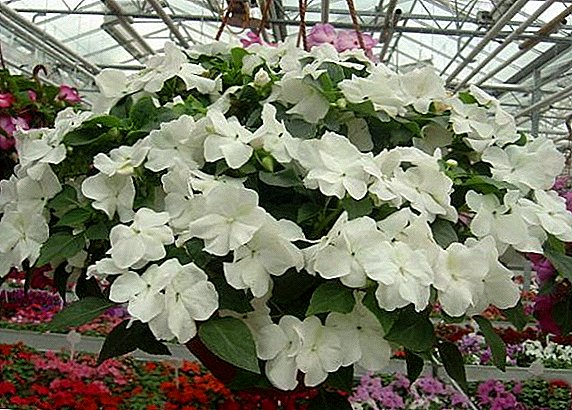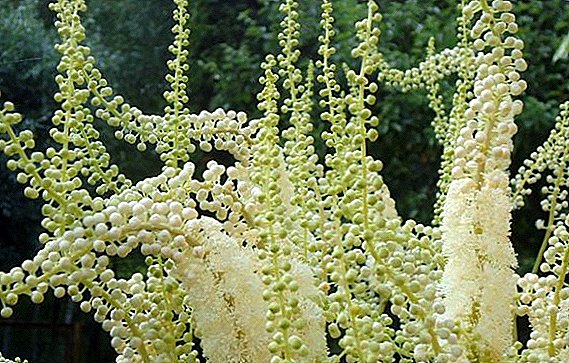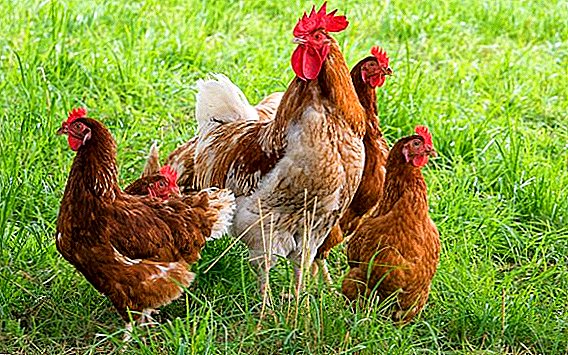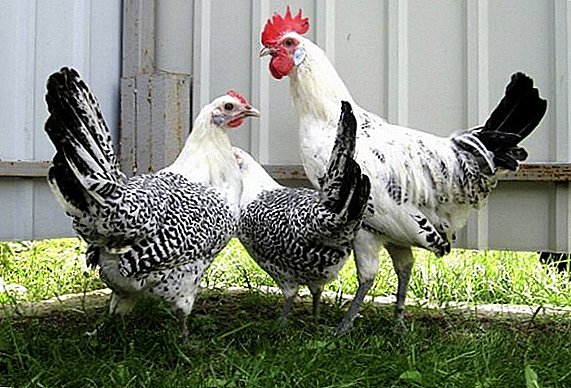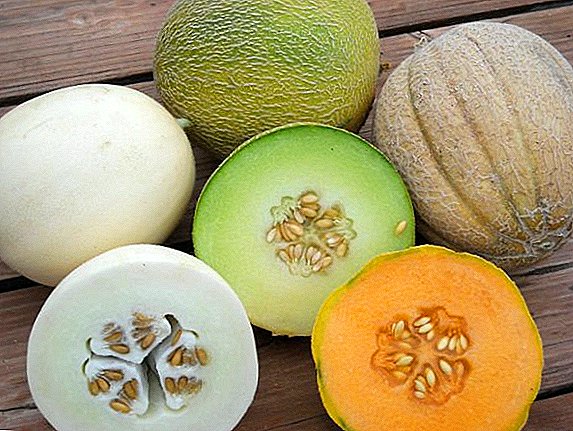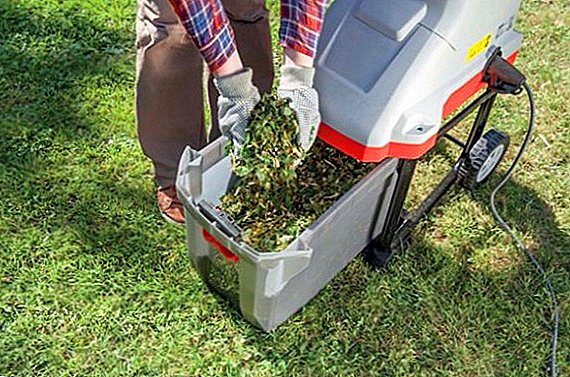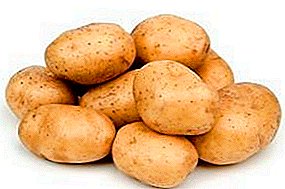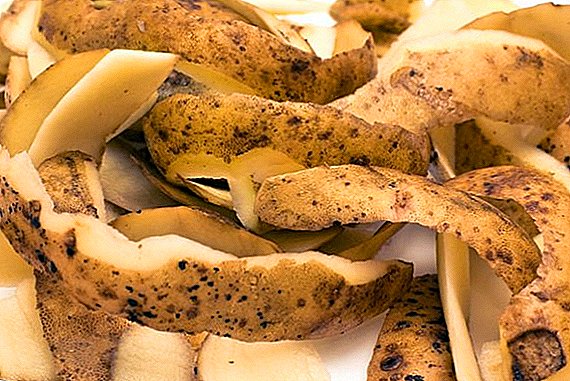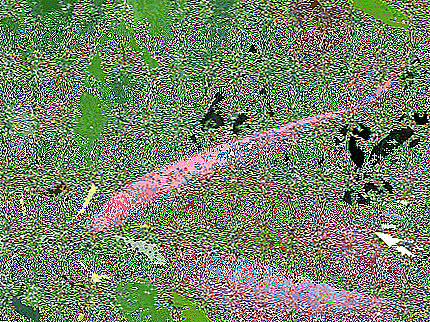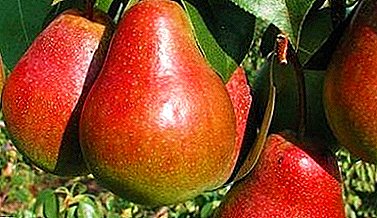
Pear - quite heat-loving culture.
But now there are many varieties that can grow even in the most northern regions.
What kind of pears refers?
Pear "Nika" - winter variety with high frost resistanceup to -38 ° C. Fruits have the ability to long storage. Variety for its intended purpose universal.
Winter varieties of pears also include: January, Yakovlevskaya, Chudesnitsa, Bere Russkaya and Fairy.
Breeding history and breeding region
 "Nika" obtained by the breeders of the GNU VNIIGiSPR them. I.V. Michurin. Parent Varieties: "Daughter of Dawn"and" Talgar Beauty ".
"Nika" obtained by the breeders of the GNU VNIIGiSPR them. I.V. Michurin. Parent Varieties: "Daughter of Dawn"and" Talgar Beauty ".
Authorship of breeding work belongs to: S.P. Yakovlev, A.P. Gribanovsky, N.I. Saveliev, I.A. Bandurko, M.Yu. Akimov and V.V. Chivilevu.
Since 2002, the variety is distributed mainly in the Central Chernozem region.
Pear "Nika": description of the variety and photos
Tree in scale medium thick. It has crown in the form of a ball, with rare spliced skeletal branches. Fruiting occurs both on annual shoots and on perennial overgrowing branches.
The shoots are smooth, brown in color, medium in thickness and straight. Chechevichek on the bark a bit. Cone-shaped buds, slightly pointed at the ends. Oval leaves have a rich green color.
On the sides there is a characteristic serrated, at the end of a short point. Sheet plate is not curved much, different smooth matte surface. Stipules resemble an awl, petioles are average.
Variety pears "Nika" has large fruits, reaching up to 200 g The form conical with truncation, correct. Peel in appearance smooth, oily, has a waxy coating.
During the period of removable maturity fruits have greenish color with a blurred red, which is the coverslip. Later pears acquire more yellow shade with brown top coat.
Short curved stem, slanted at the base. The saucer is very small, mostly wide. Brown conical seeds, medium in size, are stored in closed seed chambers.
 The flesh of the pears is very gentle, practically not having granularity and granulation.
The flesh of the pears is very gentle, practically not having granularity and granulation.
The density is medium, slightly oily, cream colored.
Is different pleasant sweet-sour taste, with slightly perceptible notes of nutmeg and without astringency.
The evaluation given during the tasting 4.5 points.
Excellent taste also have: Kupava, Krasulia, Lada, Thumbelina, Vernaya.
Description of the chemical composition of pear variety "Nika":
| Composition | amount |
|---|---|
| Dry matter | 15,7% |
| Total sugars | 10,2% |
| Vitamin C | 6.2 mg / 100g |
| Vitamin P | 122.0 mg / 100g |
| Titrated acids | 0,40% |
For more information about the pear variety "Nika" can be in the photo below:




Specifications
The variety has a high and stable yield. Fruiting trees begin with 5-6 years of life and bring the annual harvest. Take off the ripe fruit around the end of September.
REFERENCE: Pear "Nika" can be stored for up to 100 days in proper storage conditions.
 Pear hardiness is highif you take the average winter temperature of the Moscow region. But in more northern regions there may be slight frosting.
Pear hardiness is highif you take the average winter temperature of the Moscow region. But in more northern regions there may be slight frosting.
Frost resistance also differs: Uralochka, Tikhiy Don, Tema, Northerner Red-cheeked and Moscow Early.
After them are trees well restored and do not reduce yield.
At a temperature of -38 ° C in special artificial conditions, the bark and cambium did not freeze over. Damage to the xylem was 0.6 points.
Variety is partially self-fertilized. If there is only one tree on the plot, it will yield one third of its normal volume.
Only in the presence of a number of pollinators of other varieties can you significantly increase the yield.
Planting and care
- Landing
For planting pears the best time of year is considered autumn. Place must be selected sunny and very spacious. Although “Nika” is not a vigorous tree, it still requires a lot of space for the full development of fruiting.After choosing a place, prepare a pit for landing. Immediately plant a tree can not, prepare a hole at least a week.
Its size must match one meter in diameter and about 78-80 cm deep. Depending on the type of soil in the pit contribute potassium phosphate fertilizers and humus in the right proportions.
 Before planting a seedling, a stake is driven into the hole, which should subsequently be raised 70-80 cm above the ground.
Before planting a seedling, a stake is driven into the hole, which should subsequently be raised 70-80 cm above the ground.Then you need to carefully lower the tree there, straightening the roots on the sides.
At the same time you need to follow so that the root collar protrudes 5-6 cm above the ground. After this, the pit is covered with the remaining earth.
A small ditch should be made around the tree, which will retain water when watering from spreading. After that, slowly shed a seedling two buckets of water and humus humus.
- Watering
Just planted tree needs in abundant and frequent watering until its roots are finally taken.Then you need a tree water no more than three times in summerexcept for special weather conditions.
ATTENTION: If the summer is issued dry and hot, then water the tree more often than usual.
It is necessary to water a pear very carefully. She is does not tolerate cold water from the tap and sharp watering. It is better to pre-hold the water in barrels so that it can warm up.
You also can not pour a bucket of water under the tree at once, otherwise the roots will be washed away, and the pear may die. Some gardeners dig up a trench leading to a tree and pour water over itwhich in this case comes slowly and systematically.
After watering the ground around the pear you need a little loosen to avoid crust formation on a surface. Loosening provides the roots with access to oxygen.
- Care and pruning
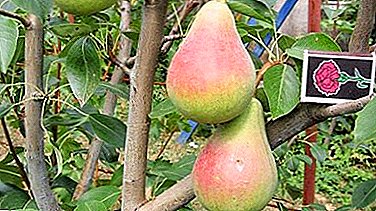 It is erroneously considered that the landing process is the most important.
It is erroneously considered that the landing process is the most important.Equally important is the competent care of a young tree. One of the steps necessary care is pruning.
One-year-old tree is cut so that it reaches a height of 45-50 cm. Thus, an intensive growth of the lower branches is launched.
When a tree reaches a certain size, usually 4-5 years of life, can be thinned crown and shortening the branches.
Thin out the crown for a better supply of sunlight, which pears love so much. Shortening the branches is necessary for the formation of a correct and beautiful crown.
ATTENTION: The lack of pruning at Nicky gives a quick exposure of the crown and small fruits.
Usually remove all the wrong growing and extra branchesby acting sharp shears. Cut down the branches on the ring so that there is no stumps left. Places pruning need to paint or garden putty.
Nick’s pear doesn’t require any special shelter high frost resistance. An exception may be in the form of shelter cover for the winter and falling asleep to the roots of mulch and snow.
 But such measures can be taken in areas with a harsh climate.
But such measures can be taken in areas with a harsh climate.Fertilizers are applied only from the second year of planting. sapling Most suitable for pears peat and humus. They should be mixed with the ground and poured into a trench around the tree during watering.
Diseases and pests
Pear "Nika" possesses complex disease resistance, such as //selo.guru/ptitsa/bolezni-p/gribkovye/parsha.html, bacterial burn, rust, antomosporiosis and nodule.
Also resistant to diseases have: Svarog, Perun, in memory of Zhegalov, Orel Summer and Noyabrskaya.
For the prevention of other diseases and pest damage comply with a number of conditions:
- Timely application of mineral and organic fertilizers will make the soil healthier and impossible for the development of pathogens.
- Excess moisture in the soil provides a favorable environment for the development of many diseases.
- In the spring and autumn, the removal of dry and diseased branches will help to improve the tree.
- Burning foliage and destroying carrion, as well as digging the soil around a tree, can destroy most of the parasites wintering in the leaves or directly in the ground.
- Lime whitewash will protect the tree from rodents and some pests.
- It is also very important to conduct regular inspection of the tree for diseases or damage by parasites. When the first signs appear, the tree is treated with special preparations for each disease or pest.

The “Nika” pear variety is quite young and is undergoing tests, but it has already gained great popularity due to its resistance to frost and diseases, as well as the magnificent taste of dessert fruits.


 Before planting a seedling, a stake is driven into the hole, which should subsequently be raised 70-80 cm above the ground.
Before planting a seedling, a stake is driven into the hole, which should subsequently be raised 70-80 cm above the ground. It is erroneously considered that the landing process is the most important.
It is erroneously considered that the landing process is the most important. But such measures can be taken in areas with a harsh climate.
But such measures can be taken in areas with a harsh climate.